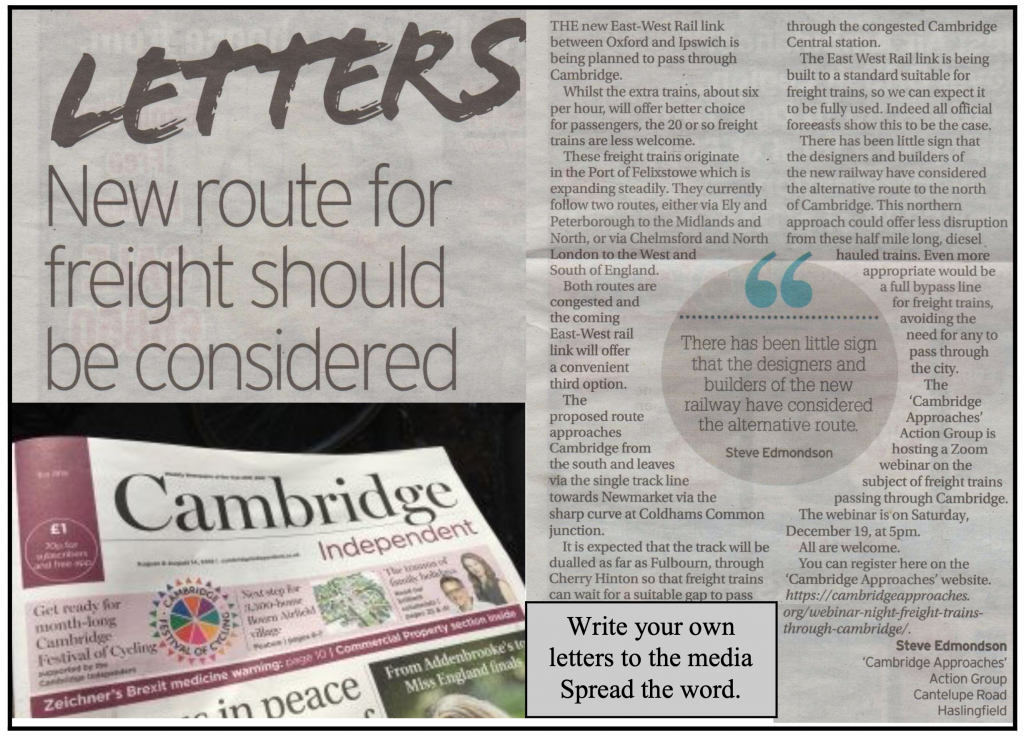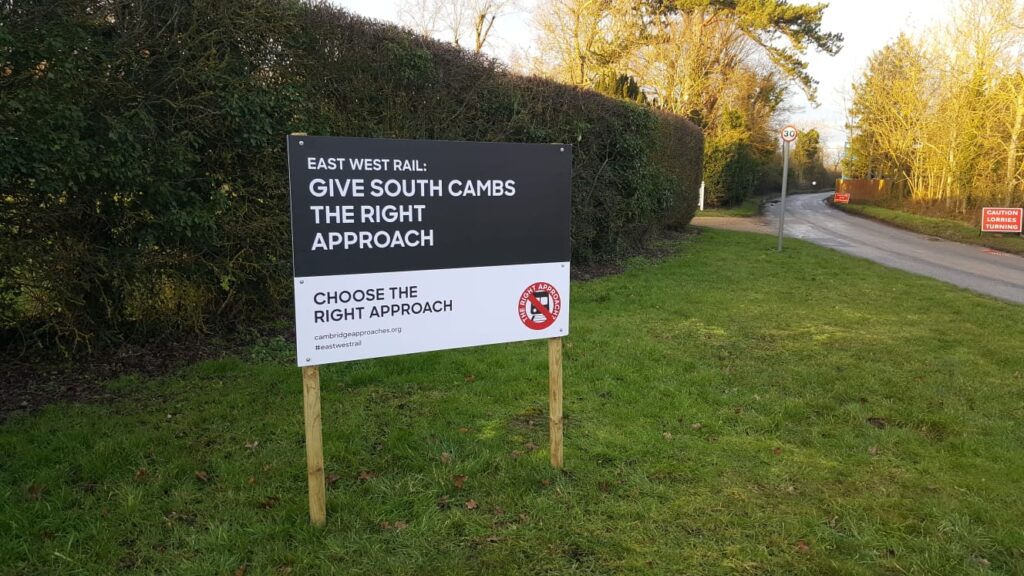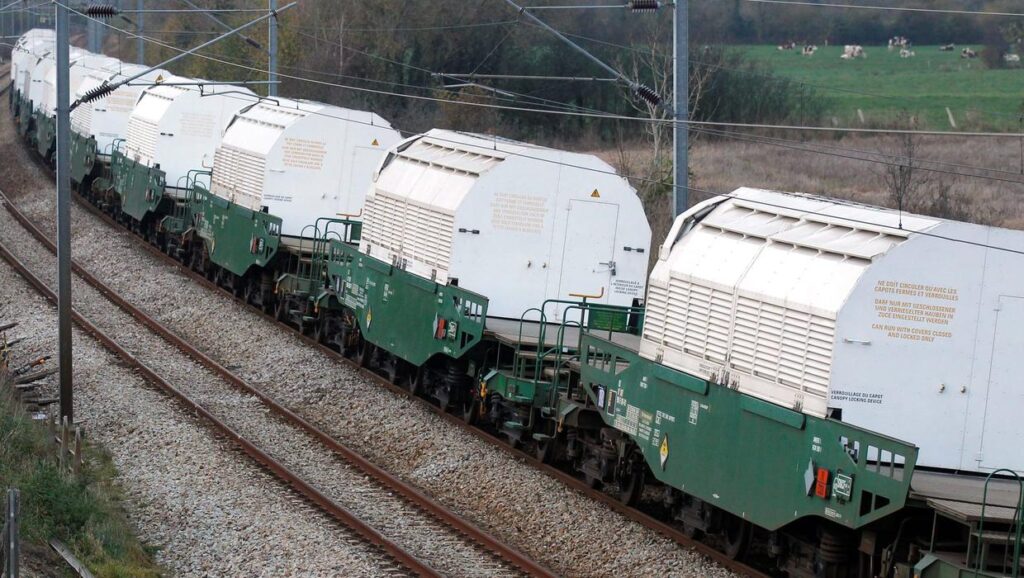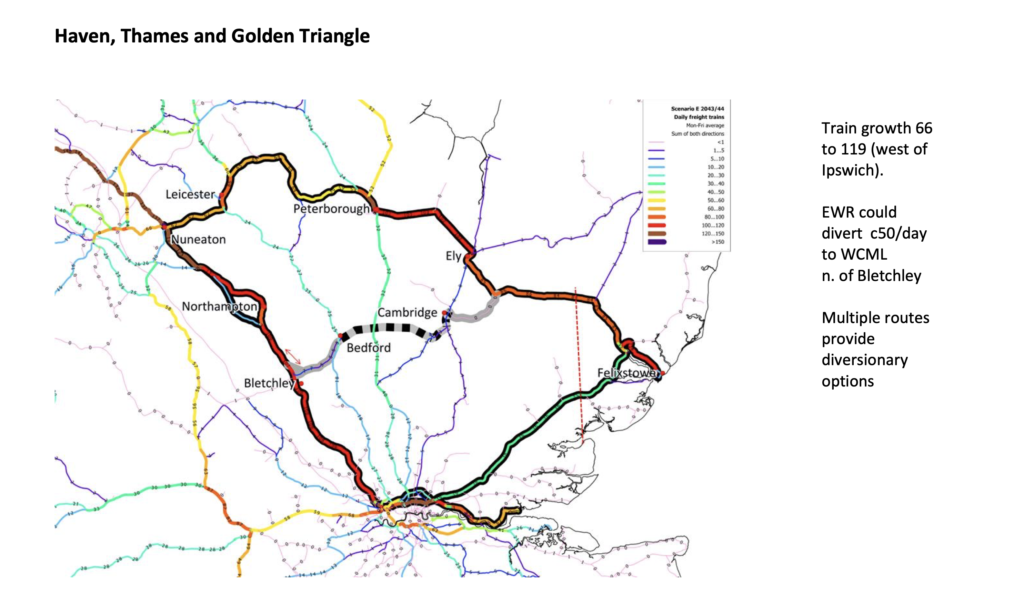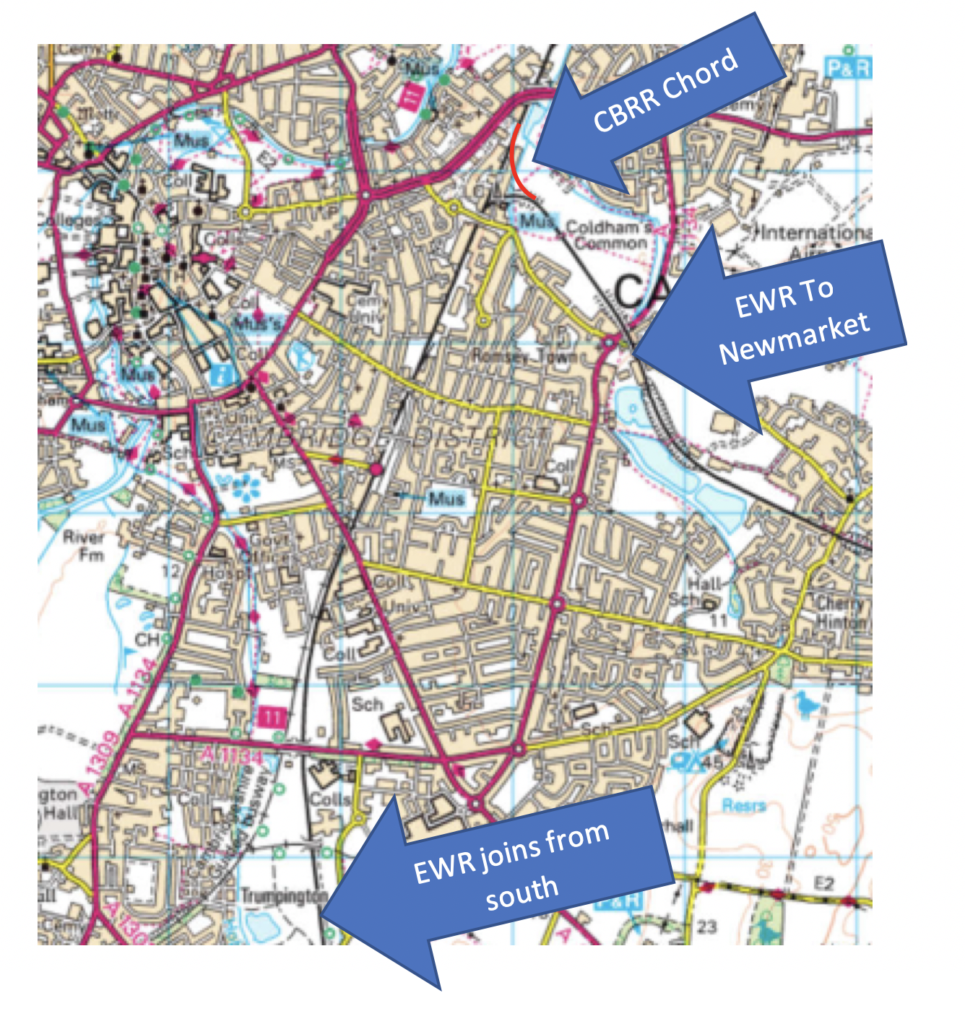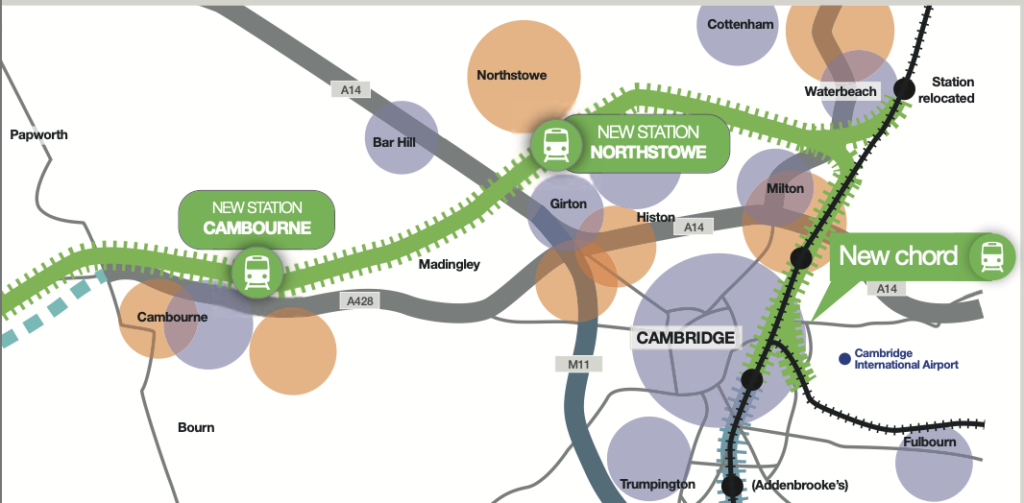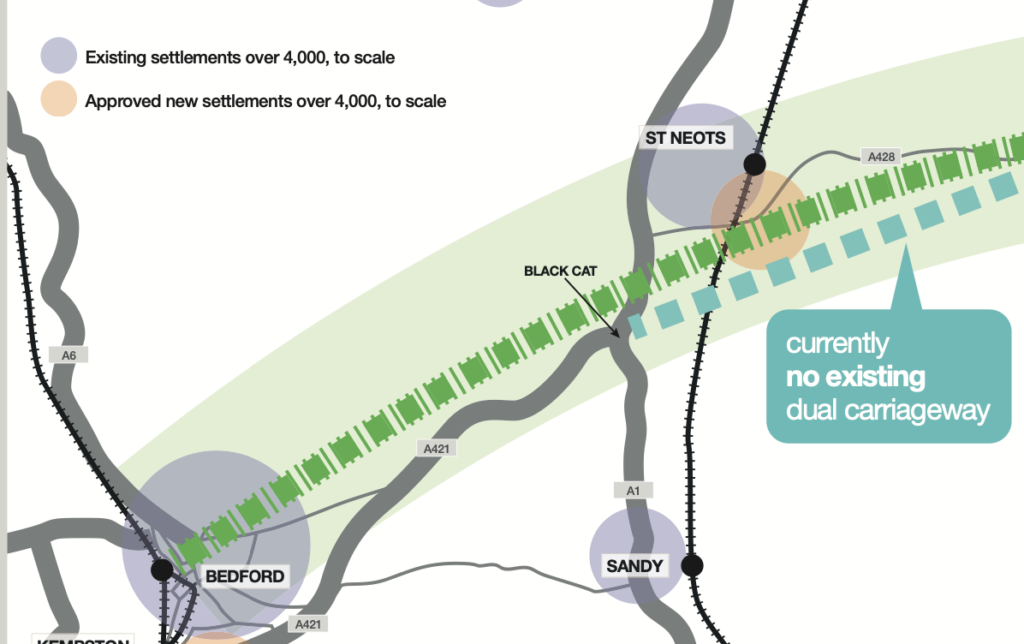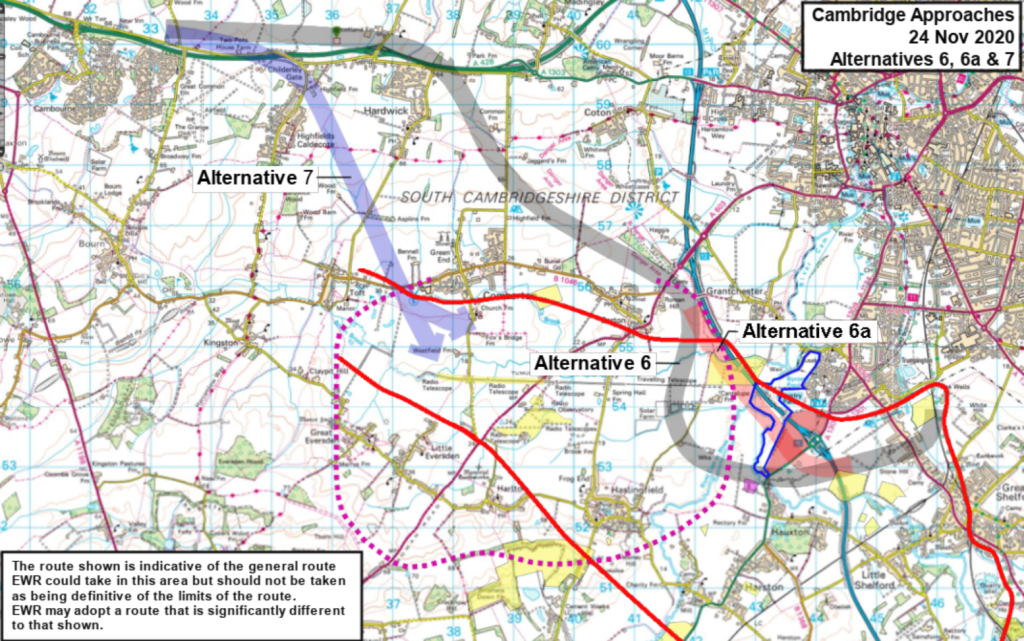
You may have noticed the press coverage on 23rd January 2021 about the East West Main Line (“EWML”) based on this press release from the Department for Transport (DfT). It’s about funding to complete the renovation of the old line from Bicester to Bletchley in the Western Section of the East West Main Line. You can hear Grant Shapps’ short You Tube video about it here. It clearly does not relate to the substantially new Central Section between Bedford and Cambridge.
The funding commitment for Bicester to Bletchley was announced in the Chancellor’s Autumn 2020 Spending Review (see page 38). The new information on the 23rd January 2021 is just the actual amount to be spent.
So why is the DfT recycling old news?
The announcement comes at the end this week’s Spotlight East West Main Line 2021 conference which also was set up to promote EWML. The presentations are still available online. So, the DfT press release is clearly part of the choreography.
There were conference presentations on Monday from England’s Economic Heartland and Transport East. When the conference moderator asked them what they saw as the main hurdle for the EWML, they both replied that it was securing funding from HM Treasury. In fact, it emerged that this was one of the main reasons for the conference’s promotion of the EWML scheme this week.
Later in the week, the Rail Minister Chris Heaton-Harris very honestly explained some of the hurdles that he faced in getting more funding from HM Treasury. He said that “49% of DfT funding went toward 2% of the journeys – and that’s rail”. He also said that currently “the Treasury has many calls on its shallow pockets”.
Readers of this blog will know that we are also concerned that the taxpayer really gets value for money from the EWML. This is not unconditional opposition to the scheme, but just a demand that EWR Co. really demonstrates the business case for it and shows that they have optimised the route around the constraints produced by that business case. For example, if it supports freight, then we need to consider the impact on communities, if it’s about commuting to the nearest city, make sure this is maximized, if it’s about the fastest end-to-end transit, draw a straight line from Oxford to Cambridge.
If you divide the total cost of the Central Section by the population between Bedford and Cambridge in 2019 prices it comes out at around £9,000 per household. We are all big stakeholders in this. So, how is the business case looking for the Central Section?
It emerged in the conference that the EWR Consortium do not have a published business case for the EWML. Perhaps EWR Co. / DfT have one?
CA have to report that we have not seen any of the following from EWR Co.:
- a housing plan associated with the route
- an environmental impact assessment across route options
- a plan to co-ordinate with other transport schemes around Cambridge
- credible explanations of Benefit to Cost Ratio calculations across options
- proper analysis of a Northern Approach to Cambridge
- honest impact assessment of the forecast long term 30% drop in passenger numbers post-Covid announced at the conference.
The Rail Freight Group did present interesting information at the conference to show how the freight traffic demand has already bounced back since the start of the pandemic. See Figure 1.

Of course, while this is good news for the freight industry, those poor people to trying to make a passenger rail business case are not in such a strong position.
One thing we did think was settled was that the Central Section would be freight capable. This was because of the “substantive answer” to an earlier question from CA to EWR Co.. However, it became clear that Maggie Simpson from the Rail Freight Group speaking at this week’s conference was working under that assumption that the Central Section would not support freight. Also Kerry Allen, a planner from Suffolk County Council said that freight plans were at an early stage.
Chris Heaton-Harris then “clarified” the situation by saying that it was “up for grabs” whether the Central Section would be freight capable.
As regards passenger usage, Maria Cliff, EWR Co. Head of Operations explained that they had developed “personas” for the types of rail passenger that they would serve.

Really good to see that EWR Co. are starting to get to grips with who will actually use the railway, this should have been published years ago. Notice the lack of the “Rapid Roy” persona who really needs a regular 90-minute transit from Oxford to Cambridge or indeed “Freight Operator Freddie”. It does make sense that the everyday users are commuters and schoolchildren, going to their nearest city. We strongly agree about school children so many 6thformers from around the county go to school in Cambridge. We believe that with the addition of a Northstowe station, the northern approach to Cambridge is likely to serve commuters better than Option E as clearly explained by CBRR’s Sebastian Kindersley here.
There are definitely benefits from building the Central Section but, given the amounts of money involved and the uncertainties around the business case, is EWR Co.’s plan imminently to launch a consultation on detailed route alignments in the option E area really sensible? If you are not sure please sign this petition.
